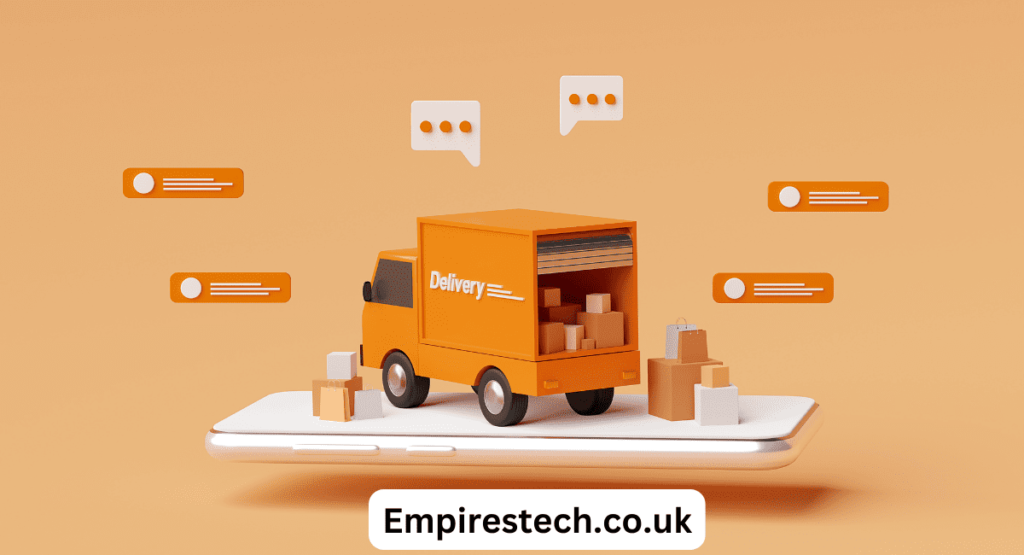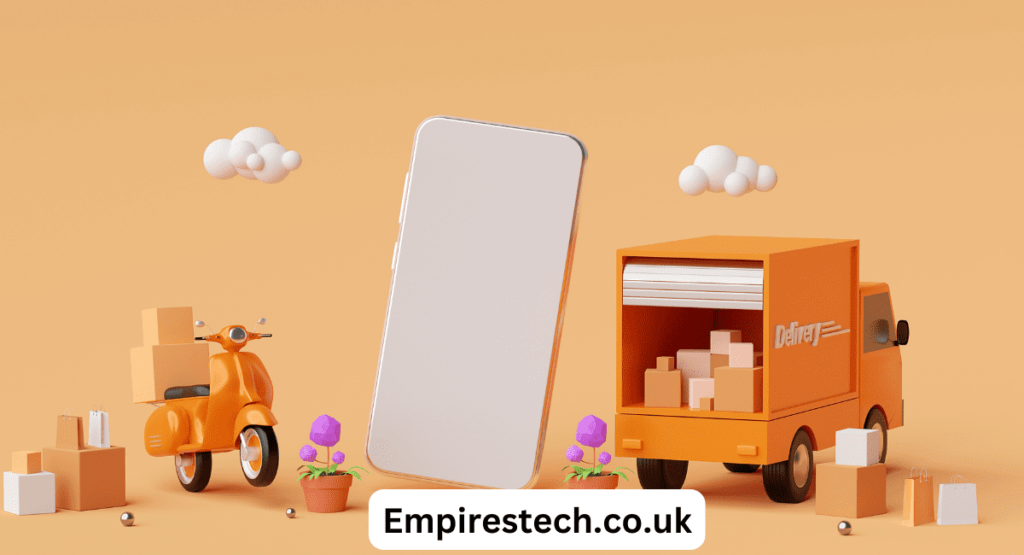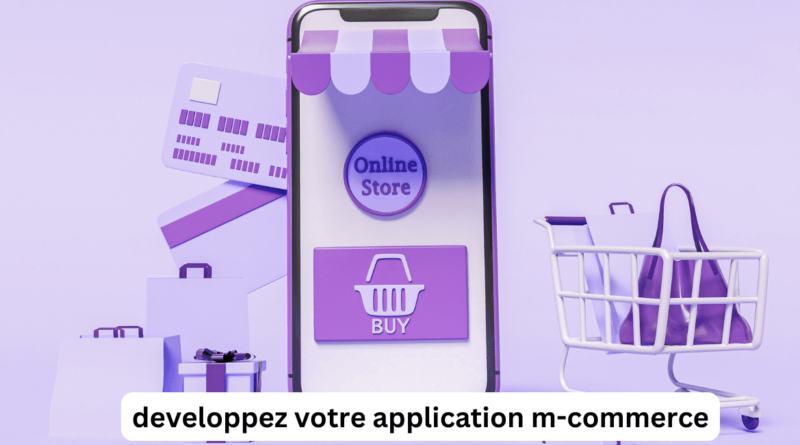Developpez Votre Application M-Commerce: A Comprehensive Guide
In today’s digital age, mobile commerce (m-commerce) has become a pivotal aspect of the retail industry. As the number of smartphone users continues to grow, businesses are increasingly looking to developpez votre application m-commerce to tap into this expanding market. This guide will provide you with a comprehensive understanding of how to create a successful developpez votre application m-commerce, from initial concept to final launch. Whether you’re a startup or an established business, this article will help you navigate the complexities of mobile commerce development.
Introduction to M-Commerce
Unlike traditional e-commerce, which primarily takes place on desktop computers, m-commerce leverages the portability and accessibility of mobile devices to reach customers anytime and anywhere. The rise of m-commerce has been fueled by advancements in mobile technology, including faster internet speeds, improved user interfaces, and the widespread adoption of smartphones.
Developing a successful m-commerce app requires a deep understanding of both the technical and business aspects of mobile commerce. This includes everything from choosing the right platform and technology stack to designing a user-friendly interface and implementing secure payment gateways. By the end of this guide, you’ll have the knowledge and tools needed to developpez votre application m-commerce that stands out in a competitive market.
Why Invest in M-Commerce?
Before diving into the development process, it’s essential to understand why investing in m-commerce is a smart move for your business.
Wider Reach: Mobile devices have become an integral part of people’s lives, with billions of users worldwide. By developing an m-commerce app, you can reach a broader audience, including those who prefer shopping on their phones.

- Enhanced Customer Experience: M-commerce apps provide a more personalized and convenient shopping experience. Features like push notifications, personalized recommendations, and one-click payments can significantly enhance customer satisfaction.
- Increased Sales: Mobile commerce accounts for a significant portion of online sales, and this trend is only expected to grow. By offering a seamless mobile shopping experience, you can boost your sales and revenue.
- Brand Loyalty: An m-commerce app allows you to build a stronger connection with your customers. Through features like loyalty programs, exclusive offers, and in-app messaging, you can increase customer retention and brand loyalty.
- Data-Driven Insights: M-commerce apps provide valuable data on customer behavior, preferences, and buying patterns. Given these benefits, it’s clear that developing an m-commerce app is a strategic investment for any business looking to stay competitive in the digital marketplace.
Key Features of a Successful M-Commerce App
To developpez votre application m-commerce that meets the needs of your customers and drives business growth, it’s crucial to incorporate key features that enhance usability, security, and overall user experience. Here are some must-have features for your m-commerce app:
- User-Friendly Interface: A clean, intuitive interface is essential for providing a seamless shopping experience. Your app should be easy to navigate, with clear categories, product descriptions, and a straightforward checkout process.
- Secure Payment Options: Security is a top concern for online shoppers. Your m-commerce app should support multiple payment methods, including credit/debit cards, digital wallets, and bank transfers. Implementing encryption and secure authentication protocols is also crucial to protect user data.
- Personalization: Personalized recommendations based on user preferences and browsing history can significantly enhance the shopping experience. Incorporate AI-driven algorithms to offer tailored product suggestions and promotions.
- Push Notifications: Push notifications are an effective way to keep users engaged and informed about special offers, new products, and order updates.
Product Reviews and Ratings: Allow users to leave reviews and ratings for products they purchase. This not only helps other customers make informed decisions but also builds trust in your brand. - Loyalty Programs: Reward loyal customers with points, discounts, or exclusive offers. retention.
- Social Media Integration: Integrate social media sharing options to allow users to share their purchases or favorite products with their network.
Offline Mode: Offering an offline mode allows users to browse products and add items to their cart even without an internet connection. This feature can enhance user experience, especially in areas with poor connectivity. - Advanced Search and Filters: Implement an advanced search function with filters for price, category, brand, and other criteria. This makes it easier for users to find exactly what they’re looking for.
- Analytics and Reporting: Integrate analytics tools to track user behavior, sales performance, and other key metrics. This data is invaluable for optimizing your app and improving business outcomes.
By incorporating these features into your m-commerce app, you’ll be well on your way to creating a product that not only meets but exceeds user expectations.
Steps to Developpez Votre Application M-Commerce
Now that you understand the importance and key features of an m-commerce app, let’s dive into the step-by-step process to developpez votre application m-commerce.
- Market Research and Planning
- Identify Your Target Audience: Before you start development, it’s crucial to understand who your target audience is. Conduct market research to identify their preferences, pain points, and shopping behaviors.
Analyze Competitors: Study your competitors’ m-commerce apps to identify their strengths and weaknesses. This will give you insights into what works and what doesn’t, allowing you to differentiate your app. - Define Your Unique Value Proposition (UVP): Your UVP is what sets your app apart from the competition. Whether it’s better prices, a superior user experience, or unique features, make sure your UVP is clear and compelling.
- Identify Your Target Audience: Before you start development, it’s crucial to understand who your target audience is. Conduct market research to identify their preferences, pain points, and shopping behaviors.
- Choose the Right Platform
- Native vs. Hybrid Apps: Decide whether you want to develop a native app (specific to iOS or Android) or a hybrid app (compatible with both platforms). Technology Stack: Choose the right technology stack based on your app’s requirements. For example, if you’re developing a native iOS app, you’ll need to use Swift or Objective-C. For Android, you’ll use Kotlin or Java. Hybrid apps can be built using frameworks like React Native or Flutter.
- Design the User Interface (UI)
- Wireframing: Start by creating wireframes that outline the layout and flow of your app. This will help you visualize the user journey and identify any potential usability issues.
- UI/UX Design: Once your wireframes are finalized, move on to designing the user interface. Focus on creating a visually appealing and intuitive design that aligns with your brand identity.
Development - Frontend Development: The frontend of your app is what users interact with. Use your chosen technology stack to build the user interface, ensuring it’s responsive and works seamlessly across different devices and screen sizes.
- It handles data processing, authentication, and other essential functions. Choose a robust backend framework and database that can handle your app’s demands.
- Integration: Integrate third-party services such as payment gateways, analytics tools, and social media platforms. Make sure these integrations are seamless and do not compromise the app’s performance.
- Testing
- This includes checking for bugs, errors, and any issues with user interactions.
- Performance Testing: Assess the app’s performance under different conditions, such as varying network speeds, heavy user loads, and different device configurations.
- Security Testing: Conduct security testing to identify vulnerabilities and ensure your app is secure. This includes testing for data encryption, secure authentication, and protection against common threats like SQL injection and cross-site scripting (XSS).
- Launch and Marketing
- Pre-Launch Activities: Before launching your app, create a buzz through social media, email marketing, and influencer partnerships. Offer early access or exclusive discounts to generate interest.
- App Store Optimization (ASO): Optimize your app’s listing on the App Store or Google Play Store by using relevant keywords, a compelling app description, and high-quality screenshots.
- Post-Launch Marketing: Continue promoting your app through various channels, including social media, paid ads, and content marketing.
Maintenance and Updates - Regular Updates: Continuously improve your app by releasing updates that address bugs, add new features, and enhance performance. Keep an eye on user feedback and make adjustments accordingly.
- Customer Support: Provide excellent customer support to address any issues or questions users may have. This can be done through in-app chat, email, or a dedicated support team.
By following these steps, you’ll be well-equipped to developpez votre application m-commerce that not only meets your business goals but also delights your customers.
Best Practices for M-Commerce App Development
Prioritize User Experience (UX):
The success of your m-commerce app largely depends on the user experience. Focus on creating an intuitive, seamless, and enjoyable experience for users. Simplify navigation, reduce the number of steps to complete a purchase, and ensure that your app is visually appealing. Remember that even minor inconveniences can lead to abandoned carts and lost sales.

- Optimize for Speed: Speed is crucial in m-commerce. A slow-loading app can frustrate users and lead to high bounce rates. Optimize your app’s performance by minimizing file sizes, using efficient coding practices, and leveraging content delivery networks (CDNs) to speed up content loading. The faster your app, the more likely users are to complete their purchases.
- Ensure Mobile Responsiveness: While your app will be designed for mobile devices, it’s important to ensure that it works well across various screen sizes and resolutions. Test your app on different devices to ensure that it is fully responsive and provides a consistent experience for all users, regardless of their device.
- Implement Robust Security Measures: Security is a top priority for m-commerce apps, as they handle sensitive customer information, including payment details. Use encryption to protect data transmission, implement secure authentication methods, and regularly update your app to patch any security vulnerabilities. Building trust with your users through robust security practices is essential.
- Leverage Analytics for Continuous Improvement: Use analytics tools to monitor user behavior, track key performance indicators (KPIs), and gather insights on how users interact with your app. This data can help you identify areas for improvement, optimize your app’s performance, and enhance the user experience. Regularly review and act on this data to keep your app competitive.
- Personalize the Shopping Experience: Personalization can significantly improve user engagement and conversion rates. Use customer data to offer personalized product recommendations, tailored discounts, and relevant content. Personalization helps create a more meaningful connection with your customers, leading to higher satisfaction and loyalty.
- Focus on Accessibility: Ensure that your m-commerce app is accessible to all users, including those with disabilities. Implement features like voice search, adjustable font sizes, and compatibility with screen readers. Accessibility is not only a legal requirement in many regions but also an opportunity to reach a broader audience.
- Regularly Update Content: Keep your app’s content fresh by regularly updating product listings, promotions, and other relevant information. Stale content can lead to a poor user experience and decreased engagement. Additionally, consider implementing a content management system (CMS) to make it easier to update content on the fly.
- Gather and Act on User Feedback: Encourage users to provide feedback on their experience with your app. This can be done through in-app surveys, reviews, and ratings. Demonstrating that you value user input can also enhance customer loyalty.
- Plan for Scalability: As your business grows, your m-commerce app should be able to handle increased traffic and transactions. Plan for scalability from the outset by choosing a flexible technology stack, optimizing your backend architecture, and using cloud services that can easily scale with demand.
By adhering to these best practices, you can create a high-quality m-commerce app that not only meets your customers’ needs but also helps you achieve your business objectives.
FAQs: Developpez Votre Application M-Commerce
- What are the key benefits of developing an m-commerce app for my business?
- Developing an m-commerce app offers several benefits, including a wider reach to mobile users, enhanced customer experience, increased sales, and the ability to gather valuable customer data. It also allows you to build stronger brand loyalty through personalized interactions and exclusive offers.
- How do I choose the right platform for my m-commerce app?
- The choice between native and hybrid apps depends on your business needs, budget, and target audience. Native apps offer better performance and a more refined user experience, while hybrid apps are cost-effective and can be deployed across multiple platforms quickly.
What security measures should I implement in my m-commerce app? - Implement encryption for data transmission, use secure authentication methods like two-factor authentication (2FA), and regularly update your app to address any security vulnerabilities. Additionally, ensure that your payment gateway is PCI DSS compliant to protect sensitive payment information.
- The choice between native and hybrid apps depends on your business needs, budget, and target audience. Native apps offer better performance and a more refined user experience, while hybrid apps are cost-effective and can be deployed across multiple platforms quickly.
- How can I ensure my m-commerce app provides a personalized shopping experience?
- Use AI-driven algorithms to analyze user behavior and preferences. This data can be used to offer personalized product recommendations, targeted promotions, and customized content. Additionally, consider implementing features like personalized push notifications and a tailored homepage based on user interests.
- What is the best way to market my m-commerce app post-launch?
- Post-launch marketing should include a mix of strategies such as social media promotion, content marketing, influencer partnerships, and app store optimization (ASO). Encourage satisfied users to leave positive reviews, and consider running paid advertising campaigns to reach a broader audience. Regularly update your marketing strategy based on performance data and user feedback.
Conclusion
In the rapidly evolving digital landscape, developing an m-commerce app is a crucial step for businesses looking to stay competitive. By following the guidelines and best practices outlined in this guide, you can developpez votre application m-commerce that not only meets the needs of your customers but also drives significant business growth.
From understanding the importance of m-commerce to implementing key features, choosing the right technology stack, and adhering to best practices, this comprehensive guide provides you with the knowledge and tools you need to succeed in the mobile commerce space. Remember, the key to a successful m-commerce app lies in continuous improvement, user-focused design, and staying ahead of market trends. With the right approach, your m-commerce app can become a powerful tool for reaching new customers, increasing sales, and building lasting brand loyalty.

